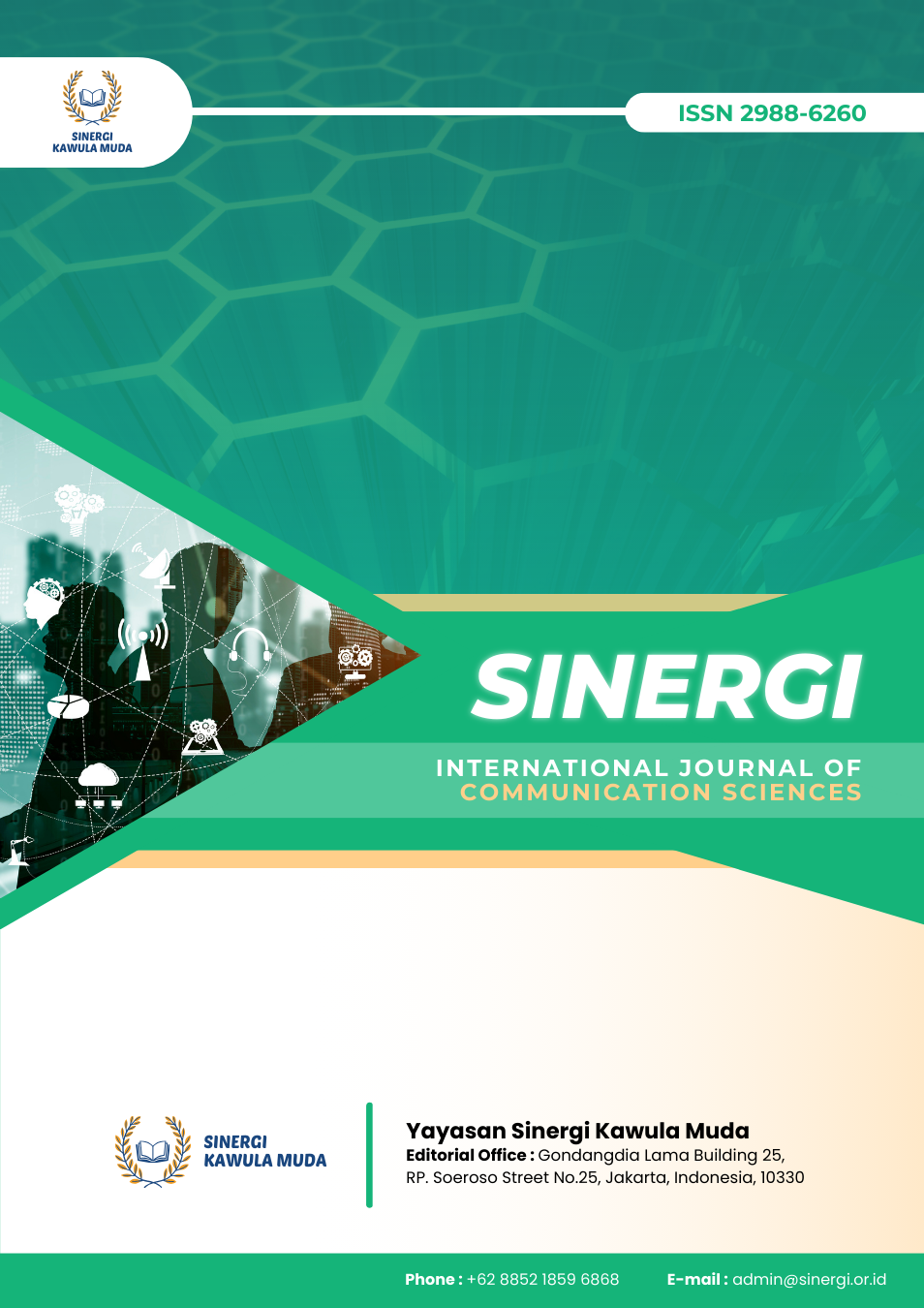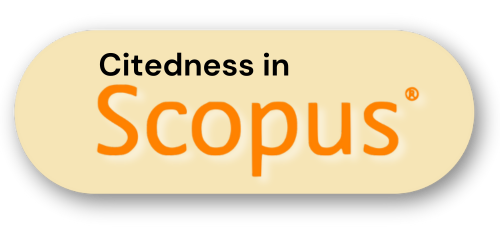The Effectiveness of Multicultural Communication in Child Development at the Early Age of Buah Hati in Kapuas District
DOI:
https://doi.org/10.61194/ijcs.v1i3.474Keywords:
Multicultural Communication, Child Development, Early Childhood EducationAbstract
This research departs from the social reality of the Kapuas community, which has cultural, ethnic and linguistic diversity. In this context, multicultural communication is an important aspect of early childhood learning and social interaction. The effectiveness of multicultural communication in this study is defined as the extent to which cross-cultural interactions can enhance children's social, emotional, and cognitive development in a heterogeneous environment. This study aims to analyze the role of multicultural communication in shaping early childhood character by examining key indicators such as increased adaptability, empathy, and social interaction. The results show that children actively engaging in cross-cultural interactions have better adaptability in various social situations, show higher empathy towards peers from different cultural backgrounds, and have more effective communication skills. In addition, this study offers a new perspective in understanding the role of multicultural communication in early childhood development, especially in areas with high levels of cultural heterogeneity. Previous studies have focused more on early childhood education in general without highlighting how multicultural communication plays a role in children's interaction and learning from an early age. The conclusion of this study emphasizes the importance of implementing multicultural communication in educational and family settings. Therefore, educators and parents are advised to create an environment that supports multicultural communication through joint play activities, cross-cultural discussions, and the use of diverse media as interactive learning tools. Thus, children can grow up in an inclusive environment and have strong social skills early on. This study uses descriptive qualitative methods and data collection techniques such as interviews, observation, and documentation. Multiculturalism plays an important role in improving the effectiveness of early childhood social and emotional skills. Early on, children exposed to cross-cultural interactions have better social adaptability and show higher empathy in interactions with peers from different cultural backgrounds. Multicultural communication's effectiveness was shown to positively impact early childhood social and emotional development in Kapuas district. This finding confirms the importance of implementing diversity-based communication strategies in early childhood education to improve children's social skills and readiness to face heterogeneous environments.
References
Arini, R. (2024). Pendidikan moderasi beragama untuk anak usia dini dalam konteks masyarakat multikultural. Jurnal Pendidikan Islam, 12(1), 45–60.
Banks, J. A. (2015). Cultural diversity and education: Foundations, curriculum, and teaching (6th ed.). Pearson.
Barrett, M. (2018). The impact of inclusive education on children’s communication skills. International Journal of Early Childhood Education, 46(3), 245–260.
Basri, H. (2021). Peran guru dalam membangun lingkungan belajar inklusif berbasis komunikasi multikultural. Jurnal Pendidikan Anak Usia Dini, 8(2), 78–92.
Bennett, M. J., & Hammer, M. (2017). Developmental model of intercultural sensitivity. Intercultural Communication Journal, 12(2), 115–130. DOI: https://doi.org/10.1002/9781118783665.ieicc0182
Çiftçi, E. Y., & Savaş, P. (2018). The effect of multicultural education on children’s self-expression skills. Early Childhood Research Journal, 21(1), 89–104.
Epstein, J. L. (2018). School, family, and community partnerships: Preparing educators and improving schools (4th ed.). Routledge. DOI: https://doi.org/10.4324/9780429493133
Fan, X., Zhang, L., & Wang, Y. (2015). Bilingual environment and early childhood communication skills. Journal of Multilingual Education, 8(2), 99–112.
Gkaintartzi, A., Tsokalidou, R., & Nikolarea, E. (2020). Parental involvement in multicultural communication in early childhood education. International Journal of Multicultural Studies, 27(3), 150–166.
Gu, X. (2016). Assessment of intercultural communicative competence in early childhood education. Language and Intercultural Communication, 16(2), 236–255. DOI: https://doi.org/10.1080/14708477.2015.1083575
Hoff, H. E. (2020). The evolution of intercultural communicative competence: Implications for classroom practice. Intercultural Communication Education, 3(2), 264–283. DOI: https://doi.org/10.29140/ice.v3n2.264
Holliday, A. (2021). Intercultural communication: An advanced resource book for students (2nd ed.). Routledge. DOI: https://doi.org/10.4324/9780367482480
İlter, B. G. (2015). The role of digital media in promoting multicultural education in early childhood. Procedia - Social and Behavioral Sciences, 199, 311–316. DOI: https://doi.org/10.1016/j.sbspro.2015.07.552
Jackson, J. (2019). Introducing language and intercultural communication (2nd ed.). Routledge. DOI: https://doi.org/10.4324/9781351059275
Jandt, F. E. (2017). An introduction to intercultural communication: Identities in a global community (9th ed.). SAGE Publications.
Lisnawati. (2023). The impact of the latest communication technology on social interaction according to the perspective of Employee Lecture Program (P2K) students at Muhammadiyah University of Palangkaraya. JTIK: Jurnal Tingang Ilmu Komunikasi, 1(1), 1–12. https://journal.umpr.ac.id/index.php/jtik/
Liu, X., Gallois, C., & Volcic, Z. (2023). Teaching intercultural communication in early childhood settings. Journal of Educational Research, 30(1), 45–60.
Martin, J. N., & Nakayama, T. K. (2018). Reconsidering intercultural communication competence in multicultural classrooms. Journal of Intercultural Communication, 25(1), 12–28.
Nakayama, T. K. (2018). Challenges in multicultural communication in early education. International Review of Education, 64(4), 423–440.
Neuliep, J. W. (2016). Intercultural communication: A contextual approach (7th ed.). SAGE Publications.
Olsson, U. (2022). Multicultural education in preschool: A Scandinavian perspective. Early Childhood Studies, 19(2), 78–96.
Palchykova, L., Ivanova, M., & Sokolova, T. (2019). The role of foreign language learning in intercultural competence development. Journal of Language Education, 24(1), 100–115.
Piller, I. (2017). Intercultural communication: A critical introduction. Bloomsbury Publishing. DOI: https://doi.org/10.1515/9781474412926
Rosala, D., Masunah, J., & Narawati, T. (2021). The integration of cultural arts in early childhood education. Journal of Early Childhood Development, 15(3), 56–72.
Samovar, L. A., Porter, R. E., McDaniel, E. R., & Roy, C. S. (2015). Intercultural communication: A reader (14th ed.). Cengage Learning.
Setyono, B., & Widodo, H. P. (2019). Representation of multicultural values in EFL textbooks. Indonesian Journal of Applied Linguistics, 9(1), 1–13.
Slot, P. L., & Leseman, P. P. (2021). Professional development of teachers in multicultural classrooms. Early Years Education, 29(4), 412–429.
Sorrells, K. (2020). Intercultural communication: Globalization and social justice (2nd ed.). SAGE Publications.
Spradley, J. P. (2016). Participant observation. Waveland Press.
Ting-Toomey, S., & Dorjee, T. (2018). Understanding intercultural communication in early education. Journal of Cross-Cultural Communication, 22(2), 99–115.
Wagner, M., & Byram, M. (2018). The role of language learning in intercultural competence development. Foreign Language Annals, 51(1), 140–150. DOI: https://doi.org/10.1111/flan.12319
Wardana, I. K., & Astuti, P. S. (2022). Language attitudes of teachers as a model for early childhood education. Journal of Language Studies, 18(2), 78–91.
Zhao, H. (2023). Digital media and cross-cultural communication in preschool education. Educational Technology Review, 35(1), 89–102.
Downloads
Published
Issue
Section
License
Copyright (c) 2023 Lisnawati

This work is licensed under a Creative Commons Attribution 4.0 International License.





